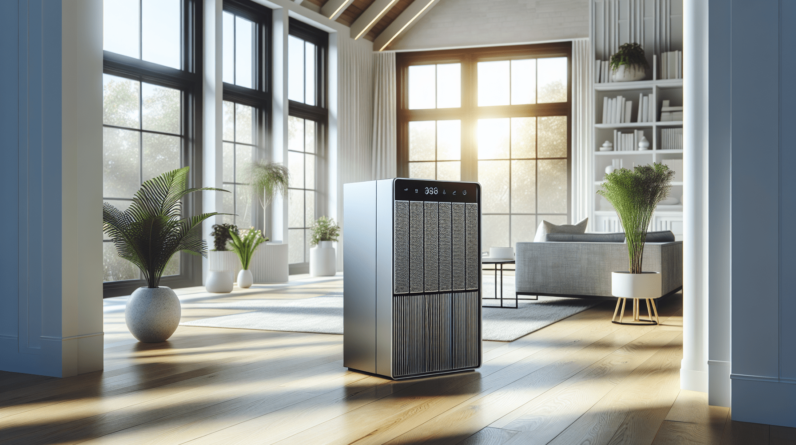

Have you ever found yourself sweating in your RV during a summer road trip, wishing you had air conditioning? Keeping cool while on the road can be a challenge, but the right air conditioning unit can make a world of difference in your comfort level. This guide will walk you through the various options and considerations for choosing the perfect air conditioner for your RV.

Understanding RV Air Conditioners
When it comes to air conditioning units for RVs, you’ll find that they differ significantly from traditional home systems. These units need to be compact, efficient, and powerful enough to handle the unique environment within an RV. Knowing the types of air conditioning units available will help you make an informed decision.
Types of Air Conditioners for RVs
There are primarily two types of air conditioning units used in RVs: roof-mounted units and portable units. Let’s break down both options.
Roof-Mounted Air Conditioners
Roof-mounted air conditioners are perhaps the most common choice for RV owners. They are designed to sit on the roof of your RV and are often more powerful than their portable counterparts.
- Benefits:
- Space-saving design
- Typically quieter than portable models
- More efficient for cooling larger spaces
- Considerations:
- Installation requires a roof cutout
- Can increase the height of the RV, leading to clearance issues
Portable Air Conditioners
Portable air conditioners are a versatile choice, offering flexibility in placement and installation. These units can be moved around easily and do not require permanent installation.
- Benefits:
- Easy to set up and relocate
- Ideal for small RVs or campers
- Considerations:
- Usually less powerful than roof-mounted units
- May require a window or vent for exhaust
Other Considerations for RV Air Conditioners
Choosing the right air conditioning unit is not just about the type. You’ll also want to consider several factors to ensure that you make the right choice for your needs.
Size and BTU Output
The size of the air conditioning unit is determined by its British Thermal Units (BTUs). The BTU output indicates how effectively a unit can cool a space. The higher the BTU, the bigger the area the air conditioner can cool.
- Sizing Recommendation:
- For RVs up to 250 square feet, look for units with 8,000 to 12,000 BTUs.
- For spaces larger than 250 square feet, aim for units with 13,000 to 15,000 BTUs.
Energy Efficiency
Energy efficiency matters, especially in an RV where you may be operating on limited power sources. Look for units with an Energy Efficiency Ratio (EER) rating, which measures the unit’s efficiency in cooling per watt of energy consumed. The higher the EER, the more efficient the unit.
Noise Level
No one wants to be kept awake at night by a loud air conditioner. Look for units advertised as quiet or having lower decibel ratings. Typically, units between 50-60 decibels are considered acceptable for use in an RV.
Installing Your RV Air Conditioner
Once you’ve decided on the type of air conditioning unit to buy, it’s time to consider installation. If you opt for a roof-mounted unit, either hiring a professional or following a reliable guide for DIY installation will be necessary.
Roof-Mounted Unit Installation Steps
- Gather Tools: You’ll need a few tools such as a drill, wrench, screwdriver, and sealant.
- Measure Location: Find the best place on the roof to install the unit, ensuring it’s away from obstructions.
- Cut Hole: Carefully cut a hole in the roof according to the specifications provided by the manufacturer.
- Install the Unit: Place the air conditioner into the hole and secure it in place.
- Seal Edges: Use sealant around the edges to prevent leaking.
- Connect Wiring: Make sure the electrical connections are secure and follow the manufacturer’s instructions.
Portable Unit Setup
Setting up a portable air conditioner is usually much simpler:
- Choose Location: Find a flat surface near a window or vent.
- Connect Exhaust Hose: Attach the exhaust hose according to the manufacturer’s instructions, ensuring it exits the window or vent.
- Plug It In: Connect the air conditioner to a power source and turn it on.
Maintenance Tips for RV Air Conditioners
Proper maintenance will ensure that your air conditioning unit runs efficiently for years to come. Here are some tips to keep in mind.
Regular Filter Changes
One of the most important maintenance tasks is to regularly check and change the air filters in your air conditioning unit. Clogged filters can restrict airflow and significantly reduce efficiency. Aim to replace or clean the filters every month during the cooling season.
Clean the Coils
Dust and debris can accumulate on the coils of your air conditioning unit, leading to poor performance. Make a habit of inspecting and cleaning the coils each season to maintain optimal cooling efficiency.
Check for Leaks
Periodically check for any signs of refrigerant leaks or water pooling around the base of the unit. If you notice any leaks, it may be necessary to consult a professional to address the issue.
Choosing the Right Air Conditioner for Your RV
After learning about the various types and considerations of air conditioning units for RVs, you may be wondering how to choose the right one for your specific needs.
Assess Your Needs
Consider how often you’ll use your RV air conditioner and the climate you’ll be camping in. If you’ll be frequently camping in very hot locations, investing in a more powerful unit may be worthwhile.
Budget
Determining your budget will narrow down your options. Roof-mounted air conditioners may have higher upfront costs but often save money in the long run through energy efficiency. Portable units tend to be more budget-friendly upfront but may struggle with efficiency.

User Reviews
Before making a purchase, it’s smart to read user reviews to see how others feel about the unit’s performance, durability, and noise level. Real-world feedback can provide insight that specifications may not convey.

Energy Sources for RV Air Conditioners
Understanding the energy source for your air conditioner is crucial because it impacts both performance and availability.
120V AC Power
Most RV air conditioning units run on 120V AC power. This is the standard electrical service found at campsites, making it a reliable choice for many RVers. If you plan to frequently camp in remote areas without electrical hookups, consider a generator or solar power backup.
Propane and 12V DC Power
Some portable air conditioners can run on propane or a 12V DC power supply, making them more versatile for off-grid camping. However, ventilation becomes essential when using propane, so ensure you follow all safety guidelines.
The Importance of Ventilation
When using any air conditioning unit in your RV, proper ventilation is key. This is especially true for portable units where warm air needs to be exhausted outside.
Creating Good Airflow
Ensure that there’s adequate airflow inside your RV. Close off rooms that don’t need cooling, and use fans to help circulate air throughout the space. Proper airflow not only enhances cooling but can also improve the efficiency of your air conditioning unit.
Other Cooling Options for RVs
In addition to air conditioning units, you may consider other cooling solutions that can enhance your comfort during intense heat.
Roof Vents
Installing roof vents can significantly improve airflow and reduce heat buildup in your RV. These operate on the principle of hot air rising and can draw in cooler outside air.
Portable Fans
Fans can be a simple and affordable way to boost airflow. Oscillating fans can distribute cool air more evenly throughout your RV, complementing your air conditioning unit.
Insulation
Proper insulation can keep the heat out and the cool air in. Consider upgrading your RV’s insulation or adding reflective window covers to minimize heat gain during hot summer days.
Conclusion
Choosing the right air conditioning unit for your RV can dramatically affect your comfort on the road. From understanding the different types of units to exploring installation and maintenance tips, you now have the information necessary to make an informed decision. Remember to evaluate your needs, consider energy sources, and keep up with regular maintenance to enjoy a cool and pleasant experience every time you hit the road. With the right air conditioning unit, your next adventure can be as comfortable as home.






